The Glen Echo Park-Clara Barton House cultural landscape is on the east side of the Potomac River in Maryland, just northwest of Washington, D.C. Its historic significance begins in 1888 when the land was initially purchased by the Baltzley Brothers. The property was host to a 19th-century Chautauqua educational campus, the home of Red Cross founder Clara Barton, and a 20th-century amusement park that operated until 1968.
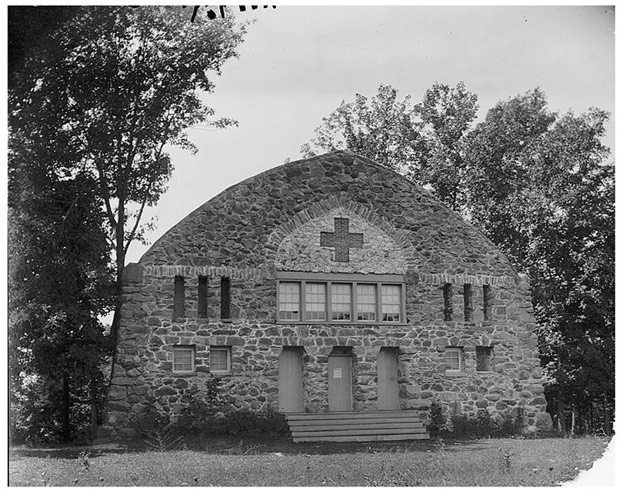
Library of Congress, Prints and Photographs Division
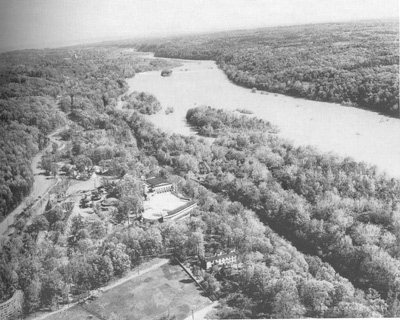
National Archives (RG 358)
Landscape Overview
The 22-acre Glen Echo Park-Clara Barton House cultural landscape in Montgomery County, Maryland comprises two National Park Service units: Glen Echo Park and the Clara Barton National Historic Site. The Clara Barton National Historic Site is an independent National Park Service holding, and Glen Echo Park is under the jurisdiction of the George Washington Memorial Parkway. The cultural landscape property is 2.5 miles northwest of D.C. on the east side of the Potomac River.
The property includes part of the 80 acres of land donated by Edward and Edwin Baltzley to establish the National Chautauqua of Glen Echo in 1891. They gifted a portion of this land to Clara Barton, the founder of the American Red Cross, and supplied the labor and materials used to construct Barton's house. Realizing limited success with the Chautauqua idea, Edwin Baltzley began renting out the grounds to Vaudeville acts, and by 1899 the first amusement park structures were built.
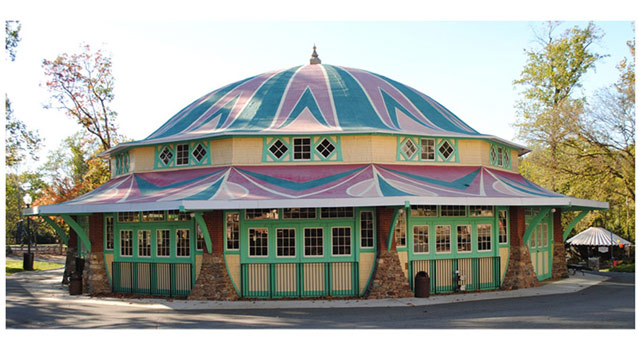
NPS
Many elements of the Glen Echo Park-Clara Barton House cultural landscape continue to reflect the historic period of significance. This period begins in 1888 with the purchase of the site by real estate developers Edward and Edwin Baltzley, and it continues until the permanent closure of the Glen Echo amusement park in 1968. Many of the historic structures remain, including the Clara Barton House and amusement park buildings that represent a layering of styles. Some are in the Art Deco style, and several are examples of Shingle architecture or other turn of the century styles, such as Spanish revival.
Even though the land had originally been purchased for development of a Chautauqua educational campus (an educational system was a popular and widespread cultural movement throughout the United States during the late 1800s and early 1900s) and the bank foreclosed on the property in 1903, the amusement park idea took hold at Glen Echo. In fact, 16.5 acres of the Chautauqua campus would function in this capacity until 1968 under the name Glen Echo Park.
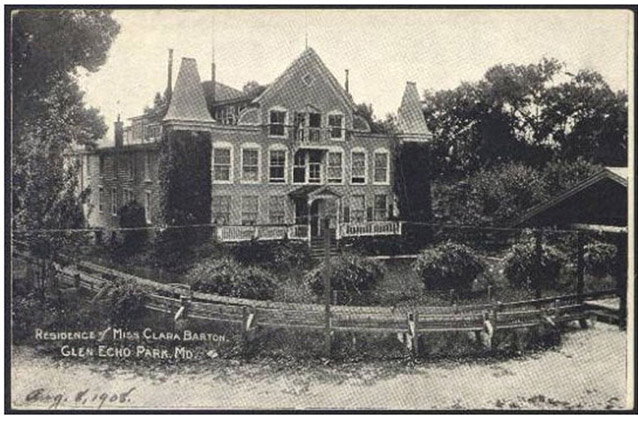
NPS (Richard Cook Collection, in Cultural Landscape Inventory park report)
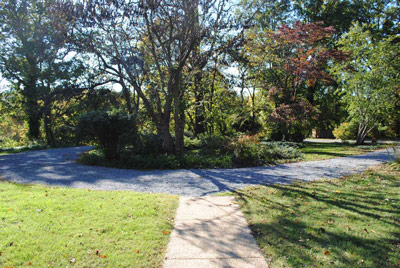
NPS
Clara Barton House
Over the course of her lifetime, Clara Barton was a dedicated Civil War nurse, an active women’s rights suffragette, and the founder and first president of the American Red Cross. She lived in the house on the property for a brief time in 1891, and then again from 1897 until her death in 1912. During the years 1891-97, the house served as an American Red Cross warehouse, and it was the organization’s national headquarters from 1897-1904. During the second period of her residence there, she developed the landscape into a miniature farm that was primarily self-sustaining.
When Barton died in 1912, the amusement park was already a very successful operation, and her close friend Dr. Julian Hubbell, who was also the chief field agent of the American Red Cross for over 20 years, had only recently succeeded in convincing the manager to relocate an early roller coaster and Ferris wheel away from her doorstep
This agriculture use of the landscape is no longer evident. Many of the trees and plants that grow today are not consistant with the historic function of the grounds, and several outbuildings that served the day-to-day operations of her small farm have all since been demolished. However, the Clara Barton House is the most significant building associated with her time at Glen Echo, and it remains intact.
Congress declared the Clara Barton House a National Historic Landmark on January 12, 1965, and in 1974 passed legislation establishing the house and grounds as the Clara Barton National Historic Site. This property was acquired by NPS in April 1975 through a donation from the Friends of Clara Barton.
Glen Echo Park
Surviving examples of local amusement parks are rare, but many of those that existed historically were established by trolley companies in order to increase the numbers of paying passengers travelling on their lines. Historic trees still grow in the Picnic Grove section the park, shading modern-day visitors just as trees have done for more than a century. Many historic structures and circulation routes remain, and the 1921 Dentzel Carousel continues to operate seasonally.
Glen Echo Park was listed on the National Register as a historic district in 1984. The Chautauqua Tower, the oldest intact structure in the Glen Echo Park-Clara Barton House Cultural Landscape, and the Dentzel Carousel were previously individually listed in 1980.
The Baltzley brothers and Clara Barton actively developed a number of views and vistas that were both internal and external to the cultural landscape. The Baltzleys established sight lines between the major Chautauqua buildings and cultivated sweeping panoramic views of the adjacent countryside. Barton was enamored with the natural beauty of her surroundings, particularly looking south from her house toward the Potomac River and C & O Canal. Subsequent development has since diminished most of these views, but the view south from the Clara Barton House is still much the same today as it was in Barton’s time.
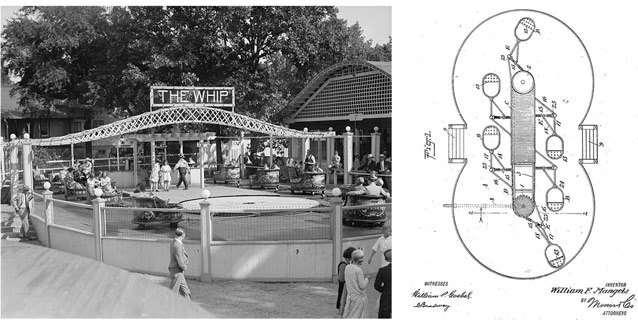
Library of Congress/U.S. Patent and Trademark Office
The historic character of the Glen Echo Park-Clara Barton House cultural landscape is reflected in many of the existing features. The landscape provides evidence of its past as a late 19th-century Chautauqua educational campus, a 20th century amusement park, and an example of a trolley park. It is also important for its associations with Clara Barton, including her life and work with the Red Cross Association. Along with her house, other structures within the park exemplify architectural trends and design.
Quick Facts
- Cultural Landscape Type: Vernacular/Historic Site
- National Register Significance Level: National
- National Register Significance Criteria: A, B, C, D
- National Historic Landmark
- Period of Significance: 1888-1968
Landscape Links
- Cultural Landscape Inventory park report
- Clara Barton National Historic Site Virtual Tour
- National Register of Historic Places: Clara Barton National Historic Site
- National Register of Historic Places: Glen Echo Park Historic District
- Glen Echo Park (Flickr Album)
- More about NPS Cultural Landscapes
Tags
- clara barton national historic site
- glen echo park
- cultural landscape
- clara barton
- glen echo park
- vernacular landscape
- art deco
- amusement park
- historic site
- chautauqua
- health
- education
- transportation
- social history
- ncr
- women's history
- profile
- women of public health and medicine
- george washington memorial parkway
- nca
Last updated: October 15, 2021
